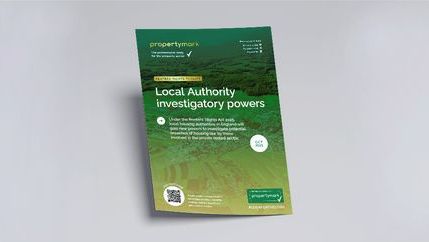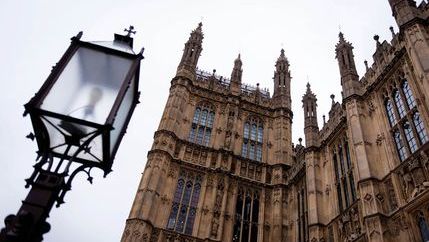
The report, produced by the Institute of Economic Affairs, acknowledges that the implementation of rent controls can lead to lower rents in the affected housing and an increase in homeownership, however, these potential benefits are outweighed by several unintended negative consequences for the PRS.
Clear and present danger
The Scottish Government is currently progressing the Housing (Scotland) Bill, which includes plans for a permanent system of rent control. It is disappointing that the sector’s overwhelming criticism has been ignored, including the substantial engagement Propertymark and the wider sector have had with MSPs and Scottish Government officials.
The impact on the sector of temporary rent caps under the Cost of Living (Tenant Protection) (Scotland) Act 2022 is alarming, with evidence from Propertymark members highlighting large rent increases between tenancies, stalled investment in the sector, and an exodus of landlords from the market.
The UK and devolved Governments should learn the lessons of this failed experiment and avoid introducing new rent controls. We believe that the best way to achieve universal adequate housing is by raising standards, and developing closer working relationships between local government, landlords, and their agents, rather than adding further financial hardship to landlords already under strain from unprecedented costs.
Avoid rent controls at all costs, Propertymark tells Senedd Committee
Our Head of Policy and Campaigns, Timothy Douglas, gave evidence to the Local Government and Housing Committee inquiry into the private rented sector (PRS) in Wales, urging them to learn lessons from the impact in Scotland and elaborating on key measures which were contained in Propertymark’s written evidence, such as a review of taxation, improved data collection, and a clear strategic plan to positively move the sector forward.
Lower quality, reduced supply, and higher rents
The introduction of rent controls often splits the PRS into two parts; controlled dwellings, which are typically in less affluent areas where demand is high, and uncontrolled dwellings, which are typically newly built or luxury properties in more affluent areas.
Artificially suppressing rental prices has the knock-on effect of devaluing landlords’ properties. To balance this, owners are more likely to reduce spending on maintenance and improvements, bringing down the quality of the homes available.
Landlords who cannot cover their costs under controlled rent rules will choose to sell, creating or worsening an imbalance between supply and demand in the PRS. People looking for a rented home are more likely to be forced to rent more expensive properties outside of the controlled area or accept a lower standard of accommodation.
When the Scottish Cost of Living measures were in place, a survey of Propertymark members revealed that 100% found landlords more inclined to raise rents between tenancies. The result of this was that Scotland experienced average rent rises comparable to London between April 2022 and April 2023, significantly more than other areas of the UK.
Rent control repercussions
The Housing (Scotland) Bill was introduced on 26 March 2024 and Section 1 raises a key contention – a commitment to introduce rent controls decided by local authorities. As the Bill is proceeding unaltered, the Scottish Government has ignored sector feedback which outlines the new legislation could do more harm than good for prospective tenants struggling to find a place to live.
Less construction and investment
The highest demand for let property is typically in urban areas. These areas are desirable for people to live in for easy access to employment and services but have the lowest number of affordable houses.
Governments may feel pressure to intervene quickly with rent controls but making it unprofitable to invest in the PRS will inevitably reduce the number of homes built and operated, particularly in controlled areas.
Reducing the size of the PRS can have adverse economic and social implications. Unlike homeownership, renting offers greater flexibility and does not require a large financial commitment, making it especially suitable and desirable for younger people, particularly young families.
Rent control fears drive cost increases
The average rent for a two-bedroom home in Scotland has increased by over 14%, reaching an average of £841 – an extra £105 per month compared to the previous year – as landlords try to cover increasing costs and prepare for the impact of new legislation.
Reduced mobility
The introduction of rent controls often splits the PRS into two; controlled dwellings, which are less affluent with high demand; and uncontrolled, which are typically newly built or luxury properties in more affluent areas.
The actual availability of housing depends, not only on the volume of the housing stock but the proportion of empty dwellings, as measured by the vacancy rate. A tight housing market is characterised by a low vacancy rate implying that newcomers or people wishing to move within the market experience difficulties finding an appropriate dwelling. Rent control can lower vacancy rates by reducing the incentives to move the sitting tenants.
Misallocation and inequality
Sitting tenants benefiting from low rents in controlled properties have little incentive to move, even if their circumstances change. This can mean larger properties are under-occupied whilst larger families struggle to find suitable homes.
Furthermore, because controls are tied to properties and not tenant incomes, there is no mechanism to ensure that low-income households are prioritised for controlled rents.
There is also a danger that, due to a greater imbalance between supply and demand, landlord preference becomes a more important factor in deciding who can rent a home, which can lead to discrimination.







